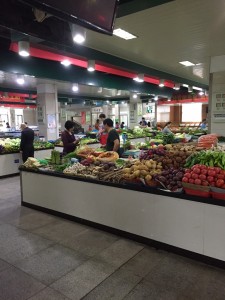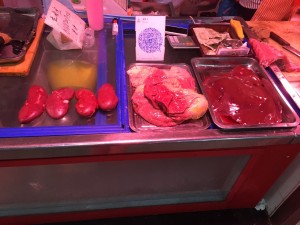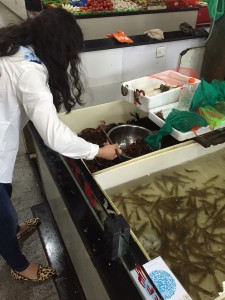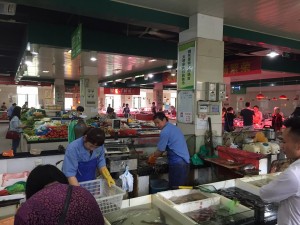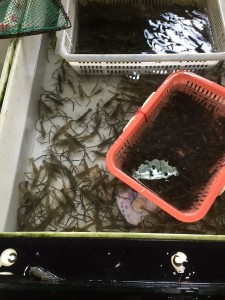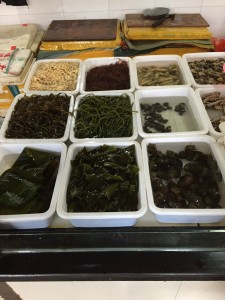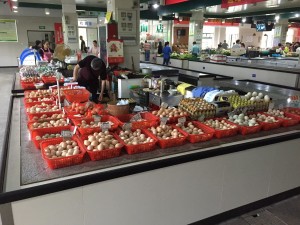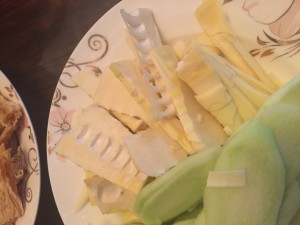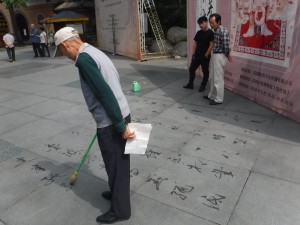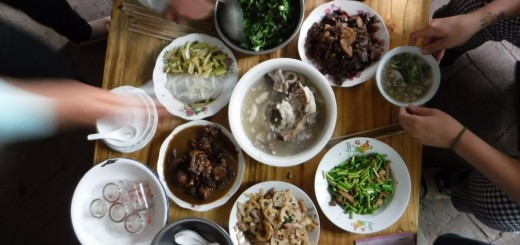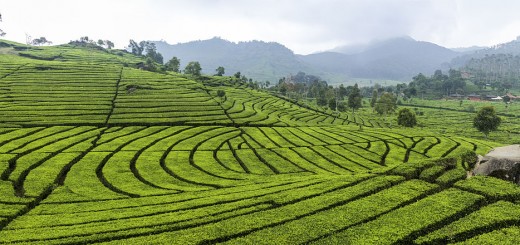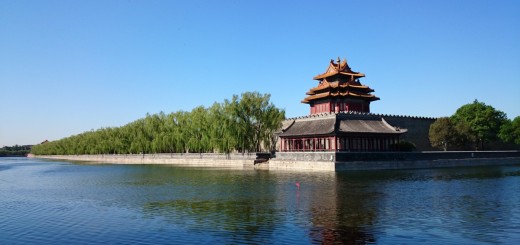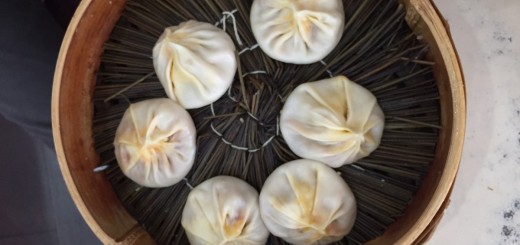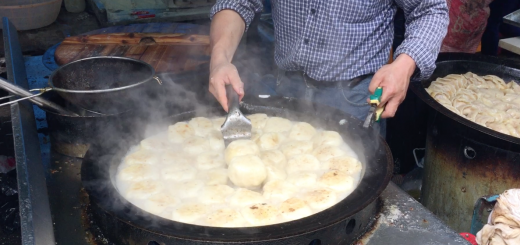Hangzhou: Chinese Grocery Stores, and the Literary Cuisine
Upon arriving to Hangzhou our host Linda was very excited about having her first American guests. She wanted to make us dinner but we told her about our project and how instead we would rather go shopping for ingredients and all cook together, in hopes that we could learn about home cooking. She picked us up in the afternoon and we went to a local super-market. In the little English she knew she told us it would be a cultural experience in itself. We walked into the bottom floor which was mostly fresh fruit, she bee-lined to the back right hand corner where the stair were and brought us up a floor, strange for a grocery store already. Upstairs we were all of a sudden returned to the farmer’s markets we had been frequenting in our previous stops!
People were set up in rows of tables with their displays, lots of them selling the same things and leaving it up to you to find whose is best. We bought some bamboo shoots and a lettuce stock vegetable. In the meat section there were no saran wrapped packages, there were different cuts laid out you could ask for pieces of and there was a variety of organ meats, trotters, chicken feet, ears, stomachs and tails that you wouldn’t find anywhere in an American grocery store.
As I explored I came across the seafood (and river-food) department. I saw a woman picking out which crawdads she wanted with long chopsticks and placing them into a strainer to be weighed.
All of a sudden everyone started backing up into me, avoiding something in front of them. Confused I peered around them as I saw a man with a fish held high in the air which he then slammed onto the tiled floor. I’m not exactly sure why he did this because the fish didn’t die, either way what an interesting environment for shopping! I continued down the isle lined with tanks of live fish, crabs, eels, snails, shrimp and more! At the end of the isle were various types of seaweeds and other sea vegetables.
Freshness certainly comes first in Chinese cuisine. Especially in Hangzhou where the flavors present are that of the ingredient, they like mild flavors, no heavy sauces or seasoning. It is characterized by its freshness with a light sweetness that enhances the natural flavors. We picked up some crawdads and a river fish that Linda thought would be good for us because it had very few bones. Next we stopped along the back wall where a small room was stocked with all types of dried as well as fresh noodles. We picked out some rice cakes and rice noodles and continued.
There was a very small section with packaged vegetables that nobody was shopping in, upon a further close it seemed to be all organic produce-it hasn’t seemed to catch on here.
On our way out I noticed almost a whole isle of different kinds of eggs. A rainbow of colors, and sizes- there were duck, quail, goose, and chicken eggs. I started to loathe what little variation we are offered in our normal grocery stores back in the states.
We began our short walk over to Linda’s very nice apartment looking over the Qiantang river. We began washing and cutting, not exactly sure what we were making because of some communication problems. She cut deep slices along the sides of the fish and steamed it with some garlic scapes. She started making a soup broth with some seafood bouillon mix heated in an electric pot on the dining room table. It started to become clear that we would be cooking things in the soup so we laid out the dishes of raw vegetables and seafood around the table. We had ate in this style before in Sichuan where they have a version called hotpot, a dangerously spicy boiling soup that you dip different foods in to cook.
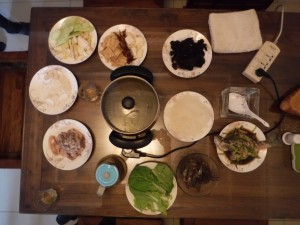
Our layout for dunking and cooking clockwise from top left: lettuce stock and bamboo shoots, tofu and mushrooms, woodear, rice noodles, steamed fish, crawdads, lettuce, tea, squid, rice cakes. In the middle is the boiling broth.
We met Linda’s husband for dinner. He spoke fluent English because he had lived in the states for years as a doctor in Canada, Boston, and Los Angeles. We asked him about what the local dished were and where to get them. He offered us lots of useful knowledge, places to eat and things to try! One restaurant we went to was a classic in Hangzhou called Lou Wai Lou (tower beyond tower) opened in 1848. Here we tried the classic dishes of Dongpo pork and Beggars Chicken. Another restaurant he recommended was Shan Wai Shan (mountain beyond mountain) another famous restaurant along west lake where we tried the local dish fried shrimps with Longjing tea leaves.
After reading The Last Chinese Chef, an in depth novel about Chinese food as well as the traditions and motives behind it I was particularly excited to visit Hangzhou. Famous for it’s literary cuisine, dishes often reference poets and their works, or stories that are linked to notable historic figures. One famous dish we tried in Hangzhou was Dongpo Pork, a red cooked and braised pork belly with skin on and equal parts fat and lean meat. In the Hangzhou culinary museum we learned the story behind this dish. Legend has it that Su Dongpo (a poet, writer, painter, gastronome and for a time, a leader in the song dynasty) was the person to recognize the beauty of the West Lake which was then overgrown with grasses. He ordered workers to dredge lake and restore it’s beauty. Pleased with the new site of the lake, locals showed their appreciation to Su Dongpo by giving him lots of pork, (which sounds like a very Chinese way of showing thanks!) Su Dongpo cooked all the pork in large blocks and sent it back to all the families. Now it is enjoyed in memory of Su Dongpo, becoming one of the famous dishes of Hangzhou. The story behind beggars chicken goes that a beggar stole a chicken from a farmer and burried in the ground to hide it after being chased. He later returned and created a fire that he cooked the mud covered chicken over. The clay sealed in the juices while the chicken cooked resulting in superior tenderness. The Emperor happened to be passing through and decided this chicken was so delicious it had to be added to the imperial court menu. It is now recreated in restaurants but the mud is replaced with lotus leaves, same affect with less mess and added aroma.It was fun to have this new element added to our eating experiences and added historical and cultural insight to each meal. We read in the Last Chinese Chef that people in Hangzhou often break out in poem in the middle of a meal if a dish speaks to them, or to honor a poet if it is inspired by their work!
